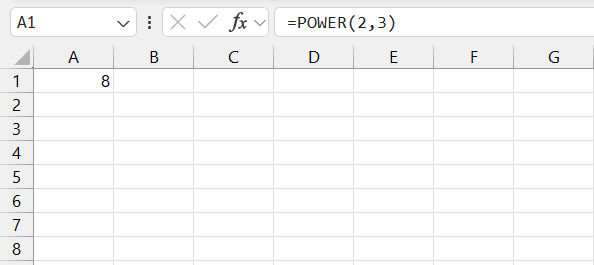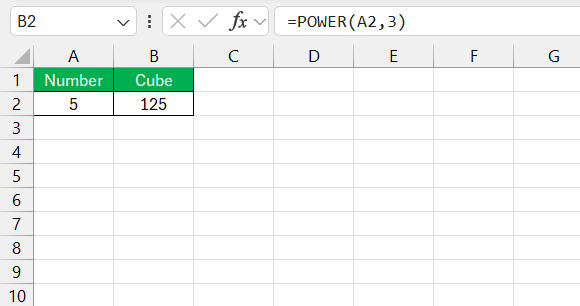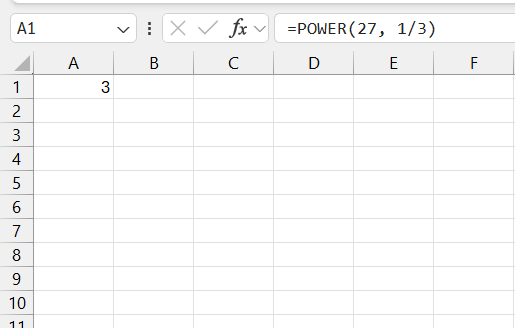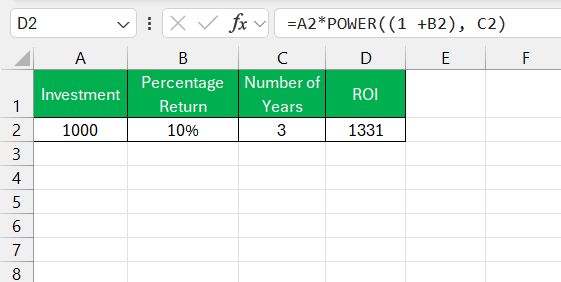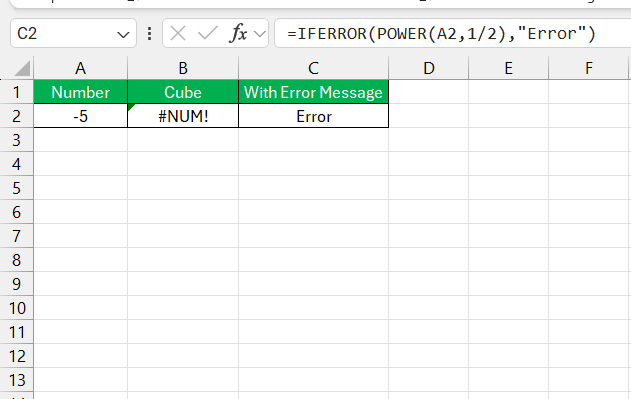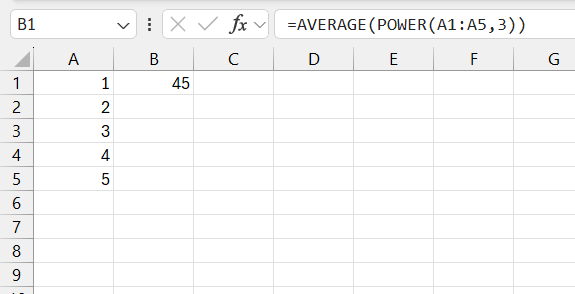The POWER function in Microsoft Excel is used to raise a number to a specified power. This function is essential for performing exponential calculations, where you need to determine the result of a number (base) raised to an exponent. It’s a versatile tool in various fields, including finance, engineering, and mathematics, facilitating complex calculations with ease. In this article, we will cover a detailed guide on how to master the power of 3 in Excel.
Key Takeaways:
- The POWER function in Excel simplifies exponentiation, reducing manual multiplication and enhancing formula readability.
- Use the POWER function for cubic calculations or raising numbers to the third power efficiently.
- The formula syntax is straightforward: =POWER(number, power), ideal for calculating cubes by setting the power to 3.
- It’s crucial for financial analysis, particularly in calculating compound interest and ROI projections over time.
- Combine POWER with other functions like SUMPRODUCT and AVERAGE to handle complex statistical or financial calculations with precision.
Introduction to Excel’s Potency
Navigating Excel’s Vast Function Library
In the universe of Excel, there’s a galaxy of functions at your fingertips—over 350 to be precise. Imagine each one as a star, lighting the way to more efficient data analysis and problem-solving. From financial forecasting to organizing data, these functions hold the key to unlocking Excel’s full potential.
Focusing on the Power of 3
The Power of 3 in Excel isn’t about incantations or mystical forces—it’s about practicality and precision. Excel’s POWER function specifically shines when working with cubic calculations or when raising numbers to the third power. Say goodbye to manual multiplication and let Excel do the heavy lifting, transforming your numbers into robust data points with just a few keystrokes.
Breaking Down the POWER Function
The Formula and Its Syntax
The POWER function is elegantly simple and it goes like this: =POWER(number, power). The syntax is straightforward, requiring two key pieces of information: the ‘number’, which is the base you want to raise, and the ‘power’, the exponent you’re raising it to. In terms of our Power of 3, the ‘power’ is always 3, which means you’re essentially cubing the base number.
When and Why to Use the POWER Function
Use the POWER function in Excel when you need to raise numbers to a specific power quickly and accurately. It simplifies the process of exponentiation, which is extremely handy in various scenarios such as calculating compound interest, geometric growth, or the volume of a cube. The function is preferred over manually multiplying a number by itself several times because it reduces the risk of errors and enhances the readability of your formulas.
Step-by-Step Tutorials for the POWER Function
Simple Examples of the POWER of 3
Let’s dive into using the POWER of 3 with some simplicity. For instance, if you’re looking to cube the number 2, you’d use =POWER(2,3) which will return 8.
Excel obediently performs this cubic calculation like a mathematical genie. In another example, to find the cubic value of a number in cell A2, you’d enter =POWER(A2,3).
This is especially useful if you’re dealing with lengths, widths, and heights in your spreadsheet and need to calculate volumes on the fly.
Complex Calculations Involving Fractions and Exponents
When your calculations demand more finesse, such as dealing with fractional exponents, the POWER function shows its true colors. For a more intricate example, try calculating the cube root of 27 by using a fractional exponent—=POWER(27, 1/3)—and Excel will gracefully present you with the answer: 3.
This can be applied to various scientific and engineering calculations where precision is paramount, and the arithmetic isn’t as straightforward as whole numbers.
Real-Life Applications of the Power Function in Excel
Financial Analysis and ROI Calculations
The POWER function blossoms into a critical tool in financial analysis, particularly for calculating returns on investments (ROI) over a period. You can use =investment * POWER((1 + annual_return_percentage), number_of_years) to project the future value of investments.
This is essential when assessing the compounding growth of stocks or interest over time, providing investors with a telescopic view into potential earnings.
Tips and Tricks for Mastering the POWER Function
Avoiding Common Errors in Using the Power Function
Knowing common pitfalls with the POWER function can save you a headache later. A frequent error occurs when inputting negative numbers with non-integer exponents. Excel won’t stand for it and will return an error. To dodge these issues, wrap your POWER function with IFERROR like so: =IFERROR(POWER(A1, B1), "Error").
This way, if an error arises, Excel will display your custom message, allowing you to address the problem gracefully without compromising the data set’s integrity.
Combining POWER with Other Functions for Robust Formulas
Take your data analysis to the next level by integrating POWER with other Excel stalwarts like SUMPRODUCT for weighted power sums, or AVERAGE to find the mean of a set raised to a power. For example, to average the cubes of numbers in A1 through A5, you’d nest POWER within AVERAGE: =AVERAGE(POWER(A1:A5,3)).
This synergy of functions creates robust formulas that can handle complex statistical or financial calculations with grace and efficiency.
FAQs About Using the POWER Function in Excel
What is the power function in Excel?
The POWER function in Excel calculates the result of a number raised to a given power. It simplifies the process of exponentiation, making it easy to perform calculations involving powers without manually multiplying the number several times.
How do you do powers in Excel?
In Excel, to perform powers, use the POWER function with the syntax =POWER(number, power) where ‘number’ is the base and ‘power’ is the exponent. Alternatively, use the caret symbol ‘^’ as in =2^3 to calculate 2 to the power of 3.
How to do 3 squared in Excel?
To square the number 3 or any other number in Excel, either use =POWER(3, 2) which utilizes the POWER function, or simply type =3^2 in a cell, using the caret (^) for exponentiation. Both methods will return the result of 9.
How to Ensure Accuracy with the POWER Function?
Ensure accuracy with the POWER function by double-checking your inputs and using the IFERROR function to catch any errors. Regularly verify data ranges and consider setting data validation rules for your input cells to prevent incorrect types of data from being entered.
What Are Some Alternatives to the POWER Function in Different Scenarios?
Alternatives to the POWER function include using the caret (^) for quick exponentiation or functions like SQRT for square roots. For more intricate mathematical operations, Excel’s MROUND, ROUNDUP, or ROUNDDOWN functions can be useful. VBA can also be used for customized power calculations in complex scenarios.
John Michaloudis is a former accountant and finance analyst at General Electric, a Microsoft MVP since 2020, an Amazon #1 bestselling author of 4 Microsoft Excel books and teacher of Microsoft Excel & Office over at his flagship MyExcelOnline Academy Online Course.

